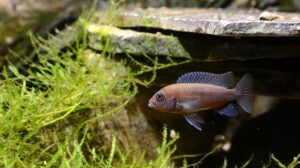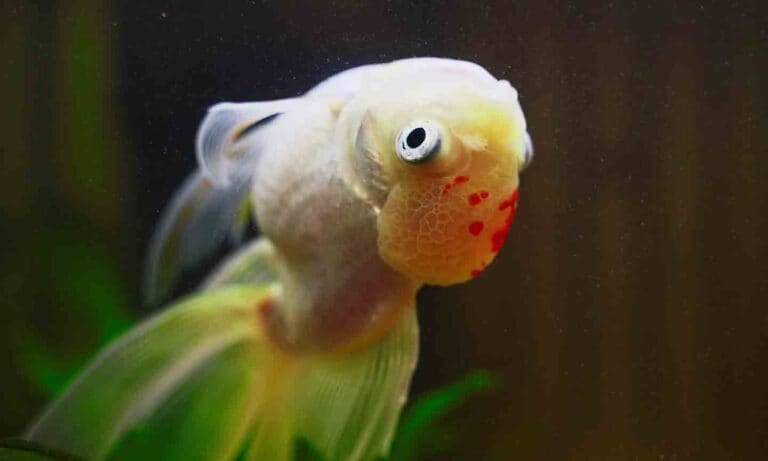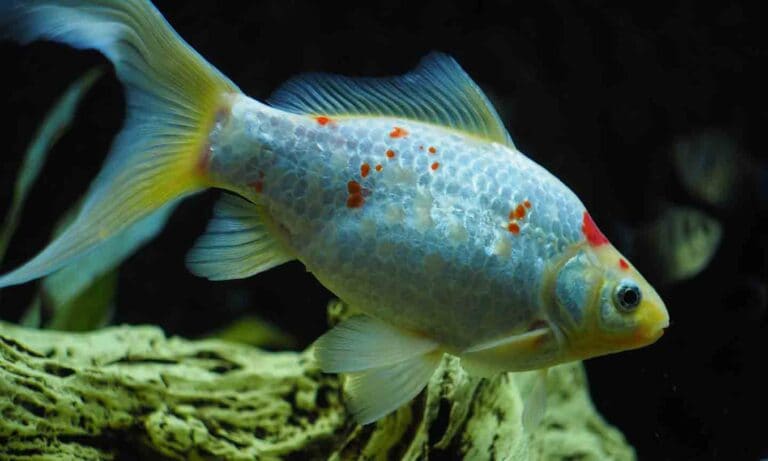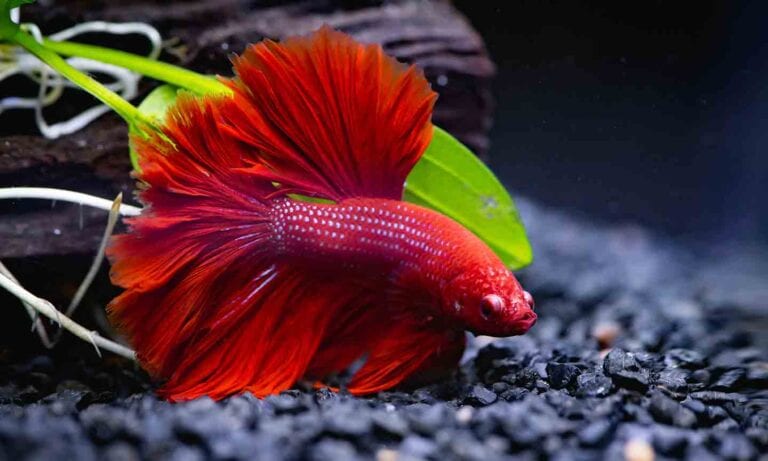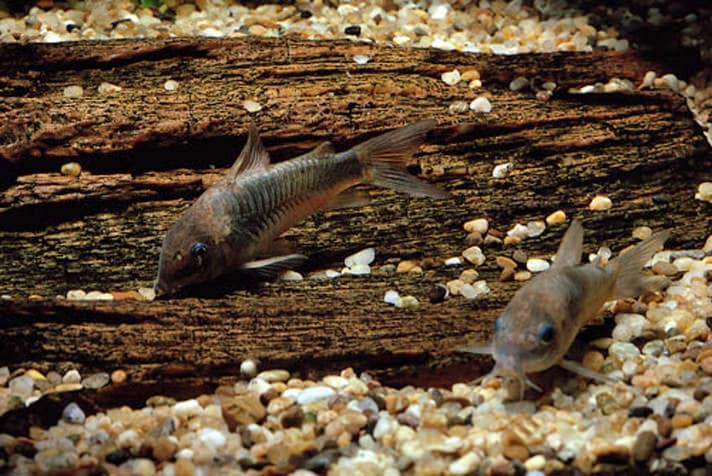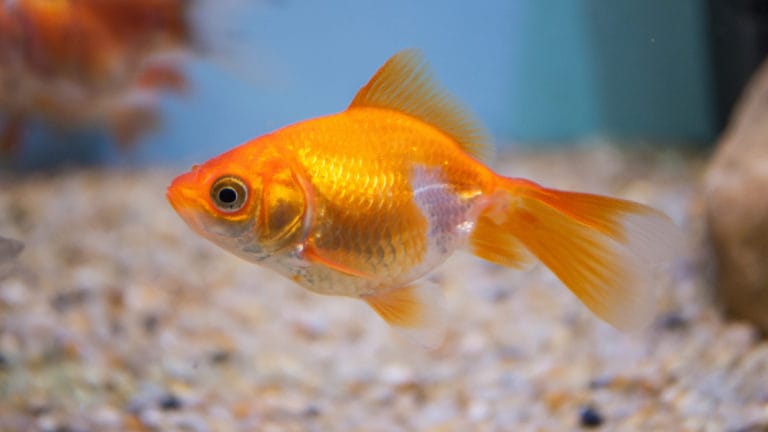Hexamitiasis is a parasitic disease that can affect both freshwater and saltwater fish. In some cases, lesions appear on the head and flanks of the fish, hence its alternative name: hole in the head disease. Hexamita infections may also be responsible for head and lateral line erosion (HLLE) disease in fish.
Identification
Fish infected with Hexamita commonly produce white, stringy feces, and their coloration becomes more subdued than normal. The fish eventually lose their appetite and gradually become emaciated. Often (but not always), lesions appear on the fish’s head. Sometimes, these lesions are also apparent on the fish’s flanks.
Among freshwater fish, hexamitiasis and hole in the head disease most commonly affect perciform fish, particularly cichlid fish. Carps, including koi and goldfish, are also vulnerable. A wide variety of saltwater fish can suffer from head and lateral line erosion, but angelfish and surgeonfish seem to be particularly susceptible.
Pathology
Hexamitiasis is caused by various species of the protozoan parasite genus Hexamita. These are likely present at low levels in the intestines of many aquarium fish where they do no harm. It is only when the fish is weakened in some way that the parasites can multiply rapidly and spread into the rest of the fish’s body. Once the parasites become established in the other internal organs, the fish soon dies.
Lab work on infected salmon and trout suggests that increased mucus production by the intestine as a response to the burgeoning parasite population is the cause of the copious and pale-colored feces associated with the disease. How and why the parasites are able to switch from their normal intestinal form into the systemic form that can spread throughout the body is not known.
The relationship between Hexamita and hole in the head disease is reasonably well-established. The lesions are caused by Hexamita parasites that have migrated into the sensory pores on the head where they cause the surrounding tissue to decay. Because of the damage to the epidermis, secondary infections easily set in, making things worse.
By contrast, it is not certain that all cases of head and lateral line erosion disease in fish are caused by Hexamita parasites. Malnutrition in particular has been proposed as a possible cause of the disease in saltwater fish at least. Because many fish likely carry low-level Hexamita infections, anyway, the disease isn’t normally considered to be contagious.
Treatment
The prime medication used to treat hexamitiasis is metronidazole (often referred to by the trade name Flagyl). The most effective approach is using medicated fish food, especially when early infections are being dealt with. But seriously affected fish may not be eating, in which case you need to add the medication to the water, typically at a dosage of 250 mg per 10 US gallons, once per day for at least three days. Metronidazole is available to aquarists over the counter in the United States, but elsewhere a veterinarian prescription may be necessary. Alongside the medication, improvements to diet and environment are absolutely critical.
Environment
One reason hexamitiasis has been much studied by fish biologists is its prevalence on fish farms where growing fish are often maintained at very high stocking densities.
From the aquarist’s perspective, overstocking, inadequate filtration, lack of water changes and insufficient oxygen are all critical factors that need consideration when diagnosing or treating Hexamita infections in fish. This is likely why hexamitiasis is so strongly associated with large cichlid fish like oscars and severums: These are precisely the sorts of fish likely to be maintained in aquariums that are too small for them and where water quality will be less than ideal.
Nitrate concentration is a useful proxy for water quality, as far as Hexamita infections are concerned. It is recommended that aquarists aim for a nitrate concentration of less than 20 mg/l where possible, and certainly the nitrate concentration should never be allowed to go above 50 mg/l. The keys to maintain low levels of nitrate are to minimize the amount of food going into the fish aquarium and to maximize the amount of nitrate-rich water removed at each water change. Big fish like oscars do not need to eat every day, and they certainly shouldn’t be allowed to gorge themselves at each meal. Water changes should be substantial and regular. Fifty percent a week is recommended.
Diet
One widely held hypothesis is that a diet poor in vitamins weakens the fish’s immune system, allowing the Hexamita parasites to become more problematic than would otherwise be the case.
Herbivorous fish like surgeonfish, saltwater angelfish, and many cichlid fish need substantial amounts of green food. Blanched curly lettuce, cooked spinach, tinned peas, sliced zucchini, and sushi nori are all useful green foods for these types of fish. Because green foods are low in protein, they have little effect on water quality, so it is worth putting them in the fish aquarium all the time to let herbivorous fish graze at their leisure.
Getting vitamins into carnivorous fish that won’t eat balanced flake or pellet foods can be difficult. In the wild, predatory fish get their “greens” by consuming the gut contents of their prey, something the aquarist can exploit. Don’t use unsafe live foods like cheap feeder fish, but instead use herbivorous invertebrates such as earthworms, mussels, snails, crayfish, river shrimps, mealworms and so on.
By: Chewy Editorial
Featured Image: Aleksey Stemmer/Shutterstock.com
Share:
